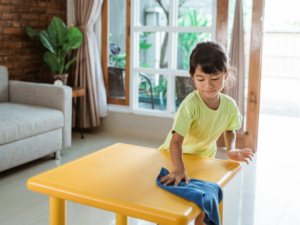Does your child hold it together for most of the school day and then have a meltdown at home? As a pediatric therapist, I often hear this and put together some simple meltdown tips to help you avoid that meltdown!
What causes meltdowns?
The school day is full of multi-sensory input, placing great demand and stress on the nervous system. This is especially difficult for those kids who struggle with sensory modulation and self-regulation. Your child tries hard to follow classroom rules, please the teacher and staff, and meet peers’ social expectations. When your child returns home from a long day of stress on the nervous system, they may need to meltdown to let it all out in an environment where your child feels safe, is not judged by others, and can be with those who love and respect the sensory differences.
8 tips on preventing a meltdown
- Respect a meltdown as a true signal that the school day was overwhelming and challenging.
- Try not to lean towards the theory of “Why do they do this at home and not at school? Doesn’t that mean they can control it?”
- Offer a sensory retreat (small, quiet space) to help unwind and unload the sensory input from the day.
- Provide an indoor swing such as a hammock or cuddle swing, as swinging in slow, rhythmical planes of movement can be very calming and regulating.
- Provide full body pressure touch (hugs, massage).
- Provide opportunities for proprioception (deep pressure and heavy work activities).
- Decrease the number of stimuli for at least an hour when your child gets home from school.
- Refrain from chores, homework, and other demands during the after-school hour.
Related articles you may find useful:



